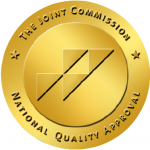Polysubstance use is the consumption of more than one drug at the same time. While some drug users have a preferred drug, other users have several drugs they like to take. Polysubstance use is common, and these drug users are clinically classified as having multiple comorbid substance disorders.
Understanding Polysubstance Abuse
It’s important to note that although polysubstance abuse usually refers to the abuse of multiple illicit drugs, polysubstance abuse also includes using prescription medications in nonmedical circumstances. People who have been prescribed medication may unintentionally combine substances. They may drink a few glasses of wine without remembering that their prescription medication should not be mixed with alcohol. Some people may have several prescriptions from different doctors that when combined, cause them to engage in unintentional abuse. To avoid polydrug use, be honest when your physician asks what medications you are currently taking. The primary reason doctors ask this question is to ensure that any medication they prescribe will not negatively interact with any other medications, or with alcohol consumption.
Polysubstance abuse of prescription drugs is as harmful as abuse that involves illicit drugs. Polysubstance abuse that involves any form of a prescription drug, even cold or cough medicines, can have intense consequences. The cough suppressant dextromethorphan (DXM) can cause hallucinations at heavy doses, and promethazine-codeine cough syrup has an antihistamine that surfaces sedative effects. According to the National Institute on Drug Abuse (NIDA), these medications are most often abused in combination with alcohol or marijuana.
How Common is Polysubstance Abuse
Many people intentionally engage in polysubstance abuse. It’s common for users to have a preferred substance, which is referred to as a “drug of choice” (DOC). When combined with other substances, the quality and experience of the primary drug are enhanced. Those who frequently abuse opioid drugs (heroin or prescription painkillers) may combine them with benzodiazepines to increase sedative effects and relaxation.
Among individuals with a recent heroin use disorder, more than 66% of them were also dependent on nicotine, 25% had an alcohol use disorder, and 20% had a cocaine use disorder. Among individuals with cocaine use disorders, about 60% had an alcohol use disorder, nearly 50% were dependent on nicotine, and more than 20% also had a marijuana use disorder. While individual substance use disorders are challenging to treat, the treatment of comorbid substance use disorders and mental illness is even more complex, as the effects of multiple substance use have the potential to further complicate diagnosis and treatment.
Dangers of Polysubstance Abuse
While the interaction of different drugs can enhance desired effects, polysubstance abuse will likely increase the negative side effects of each drug. Research from the University of Michigan shows that combining drugs creates unpredictable circumstances. Those who engage in polysubstance abuse can’t foresee the short and long-term consequences. Combining drugs leads to increased severity of side effects. All drugs come with the potential for negative side effects, but when substances are used together, their potential severity increases exponentially. Combined substances cause additive effects, which are usually unique and more severe than the separate effects of each drug.
Common side effects from polysubstance abuse can include vomiting, nausea, body aches, balance instability, and changes to heart rate, blood pressure, and respiration rate. The impact of polysubstance abuse can be long-term and can lead to acute health problems. Drug interactions can reduce the metabolism, increasing blood concentrations of the substances used. According to The European Monitoring Centre for Drugs and Drug Addiction (EMCDDA), addictive drugs boost toxicity in the blood and can produce new metabolites formed from the breakdown of multiple substances. Many diseases and disorders are more common in those who abuse multiple substances. Chronic diseases, such as hepatitis C, are often seen in heavy drinkers who inject drugs, and tobacco smokers who use cocaine are more at risk for myocardial infarction.
Overdose is always a risk with any substance, but the risk is increased when multiple substances are abused. Because some substances mask the effects of others, users may inadvertently take far higher doses because they don’t feel the full effects of one substance. Overdose can occur, leading to long-term health effects or even death. Overdose from combined substance use is more difficult to treat. Opioid overdose can sometimes be reversed with the administration of naloxone, but it may not be effective if the overdose is caused by multiple substances. An overdose from the combination of opioids and benzodiazepines, stimulants, or alcohol, can lead to more complicated and less effective treatment. Polysubstance addiction generally requires specialized treatment to achieve full recovery.
Effects of Polysubstance Abuse
Some users combine drugs to counteract the effects of certain substances. A person may take a stimulant like cocaine to counteract the depressant characteristics of alcohol, allowing them to drink more for longer periods. A University of Michigan study found that reports of prescription drug abuse were 18 times higher in participants who were dependent on alcohol.
Alcohol and Prescription Drugs
According to The National Institute on Drug Abuse (NIDA), combined use of alcohol and prescription drugs can result in alcohol poisoning, blackouts, respiratory depression, and death. Alcohol is frequently mixed with prescription opiates (Vicodin, Percocet, and OxyContin) and stimulants (Ritalin, Xanax, and Valium). Some individuals abuse sleeping medications by taking them with alcohol to fall asleep faster. Consuming alcohol with prescription medications can lead to dangerous interactions and carries the potential risk of alcohol poisoning or fatal consequences.
Cocaine and Alcohol
One of the most common forms of polysubstance abuse is mixing cocaine and alcohol. When someone who uses cocaine drinks alcohol, the quantity of cocaine in their system has the potential to increase by 30%. Cocaethylene, a psychoactive metabolite, produced from cocaine consumption, remains in the blood longer and increases heart rate and blood pressure, which can lead to cardiovascular problems. Similarly, individuals may drink more alcohol because cocaine can reduce the perception of alcohol’s effects.
Opioids and Cocaine
Opioids and cocaine have opposing effects. The central nervous system is depressed by opioids and stimulated by cocaine. As with cocaine and alcohol, users may attempt to take these substances together to counteract the negative effects of either drug. Users who are “charged up” from cocaine may seek opioids to calm the body and induce sleep. Because these substances block the effects of each other, overdose and other complications are more likely.
Benzodiazepines and Other Substances
According to a 2014 report from the Substance Abuse and Mental Health Services Administration (SAMHSA), nearly 1 million emergency department visits from 2005-2011 involved benzodiazepines, or a combination of benzodiazepines and alcohol or opioid pain relief medications. The SAMHSA report found that there was about a quarter to double the increase in predicted risk of serious outcomes from combining the drugs compared to using only benzodiazepines. When it comes to risks related to benzodiazepine use, they are most common when the drugs are mixed with other substances of abuse.
Polysubstance Abuse Treatment
Because withdrawal from multiple substances is more complicated than withdrawal from one substance, inpatient medical detox is generally recommended. With medical detox, clients are supervised 24 hours a day by medical professionals. This constant care ensures continuous monitoring of vital signs, and prompt action should any medical emergencies occur. Supervising physicians can administer medications to counteract withdrawal symptoms, such as anti-nausea medications to deal with vomiting and intestinal upset or antidepressants to address mood fluctuations. Due to the potential unpredictability of withdrawal from multiple substances, continual medical monitoring is even more necessary. The support and encouragement delivered in medical detox lessen the likelihood of relapse and increases the chances of successful withdrawal from all substances of abuse.
While detox is a critical first step in the recovery process, it is not an effective treatment on its own. Substance detox must be followed by a comprehensive addiction treatment program that primarily includes therapy. At Boardwalk Recovery Center, we believe that in all cases of substance use disorders, including those involving polysubstance abuse, Cognitive Behavioral Therapy (CBT) is beneficial. CBT focuses on the behavioral and thought patterns involved in substance abuse, aiding to modify thoughts and thereby adjust behaviors. According to Psychology Today, CBT can be effective in altering destructive behavioral patterns, such as those involved in substance abuse.
At Boardwalk Recovery Center we recognize that the key with any substance abuse treatment program is that care is individualized based on the needs of each client. According to NIDA, the most successful treatment programs customize treatment to address all of the client’s needs, not just those related to their primary substance abuse. In cases of polysubstance abuse, this involves identifying the reasons that led to the need to abuse any substance and then dealing with those issues accordingly. At Boardwalk Recovery Center, we offer comprehensive care plans to ensure that our clients engaging in polysubstance abuse can terminate abuse of all substances.
Your Path to Recovery Starts Here
If you or someone you care about is struggling with polysubstance abuse, know that recovery is possible—and you don’t have to face it alone. At Boardwalk Recovery Center, we specialize in helping individuals overcome the complexities of multiple substance dependencies through compassionate, evidence-based care. Our treatment programs are designed to address the unique challenges of polysubstance abuse.
Our dedicated team, many of whom have personal experience with recovery, is committed to walking alongside you every step of the way. We believe in building a steady foundation of recovery and wellness, helping clients connect with the local recovery community, and supporting them in cultivating a sense of purpose and meaning in life.
Taking the first step can be daunting, but you don’t have to do it alone. Contact us today or visit our admissions page to learn more about how we can assist you in initiating a successful intervention and guiding your loved one toward lasting recovery.
At Boardwalk Recovery Center, we’re here to help you transform hope into healing.
Life can be good again and we’d like to show you how.






